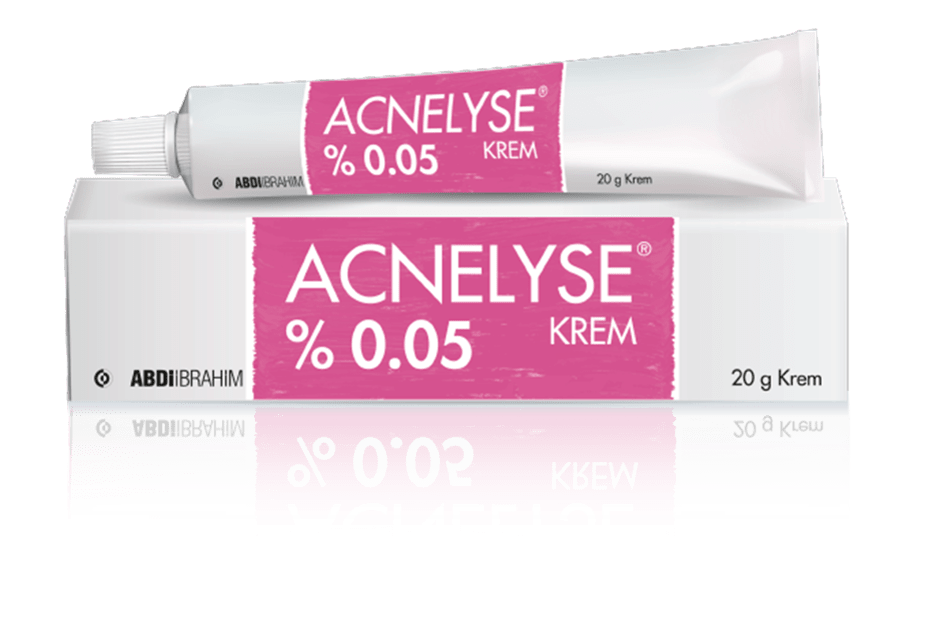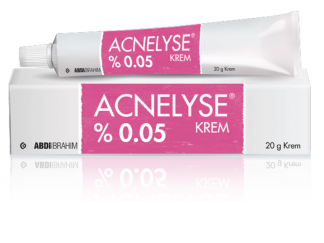Description
FedEx / UPS Express Shipping
ETA: 3 DAYS
Acnelyse cream 0.050% – 20 gr for acne, fine wrinkles, dark spots, or rough skin on the face caused by damaging rays of the sun
Acne, Acne Treatment, Fine Wrinkles and Face Damages, Papules and Pustules, Maximum Strength
Apply Tretinoin Cream or Gel at Night
Affordable, effective and easy to use, tretinoin is one of the most widely used topical retinoids for treating and preventing acne, speeding up skin cell replacement and reducing the signs of ageing.
Scientific studies showed that tretinoin 0.05 percent gel used daily over a period of 12 weeks reduced levels of acne on the face. Other studies show that daily use of tretinoin cream can make wrinkles and other signs of facial skin ageing less obvious.
Our guides to using tretinoin for acne and anti-ageing cover these topics in more detail, with a range of interesting studies covering tretinoin’s numerous benefits.
Whether you’re using tretinoin cream for acne prevention or anti-ageing purposes, it’s important to use it effectively. Tretinoin is a powerful, highly effective retinoid, meaning that you’ll probably only need a small amount to get noticeable, lasting results while minimizing any side effects.
Below, we’ve covered the A to Z of using tretinoin cream for acne prevention and anti-ageing, from choosing the right strength to successfully applying tretinoin to your face.
Start By Choosing The Right Strength of Tretinoin Cream
Tretinoin creams and gels come in a variety of concentrations, ranging from .01 percent tretinoin to significantly stronger .1 percent formulations.
Although tretinoin is a safe medication, it can cause some side effects when applied to your skin. The most common side effects of tretinoin are dry skin, peeling and irritation, all of which are most common during the first several of treatment.
To reduce your risk of experiencing skin irritation, it may be best to begin topical tretinoin treatment using a low to mid-strength tretinoin cream.
Finding the correct tretinoin cream or gel concentration is a very individual process, meaning it could take several months for you to “dial in” your tretinoin use and work out which strength is ideal for your skin sensitivity, acne or other skin issues.
It is important to work with your healthcare provider or dermatologist to find the best concentration and formulation for your condition.
The recommended time to apply tretinoin cream or gel to your face is at night, shortly before you go to bed. This allows the tretinoin to be fully absorbed by your facial skin without any risk of sunlight affecting your skin.
If your healthcare provider or dermatologist recommends using tretinoin at a different time, such as in the morning, the best approach is to follow their advice and instructions.
Applying tretinoin to your face is a simple process that you’ll quickly get used to. In total, there are only six steps to memorize:
- With clean hands, wash your face using warm water and a small to moderate amount of mild non-abrasive soap. Make sure that your face is completely clean.
- After washing, gently dry your face using a towel. Gently blot your face to dry the skin without causing irritation from rubbing. Allow enough time to ensure your face is completely dry, usually 20 to 30 minutes.
- Squeeze the recommended amount of tretinoin cream or gel from the tube, and using your fingertips, gently massage the solution into the affected areas of your skin. Focus on the cheeks, forehead, chin and other areas with acne or visible signs of skin ageing. Be careful not to apply the cream to your eyes, lips or other sensitive areas.
- Massage the tretinoin gently into your facial skin. Apply the cream or gel evenly to the affected parts of your skin for even absorption. One pea-sized amount of tretinoin should be enough for your entire face. It can take one to two minutes for the tretinoin cream or gel to begin to absorb into your skin, at which point it should no longer be visible.
- Set a timer for 20 minutes and avoid touching your skin or applying any other skincare products until the tretinoin has been fully absorbed.
- If you have dry, flaky or peeling skin, you can apply an alcohol-free moisturizer after 20 minutes have passed. Moisturizers can be useful in preventing the flaking and peeling side effects that some people experience from tretinoin.

